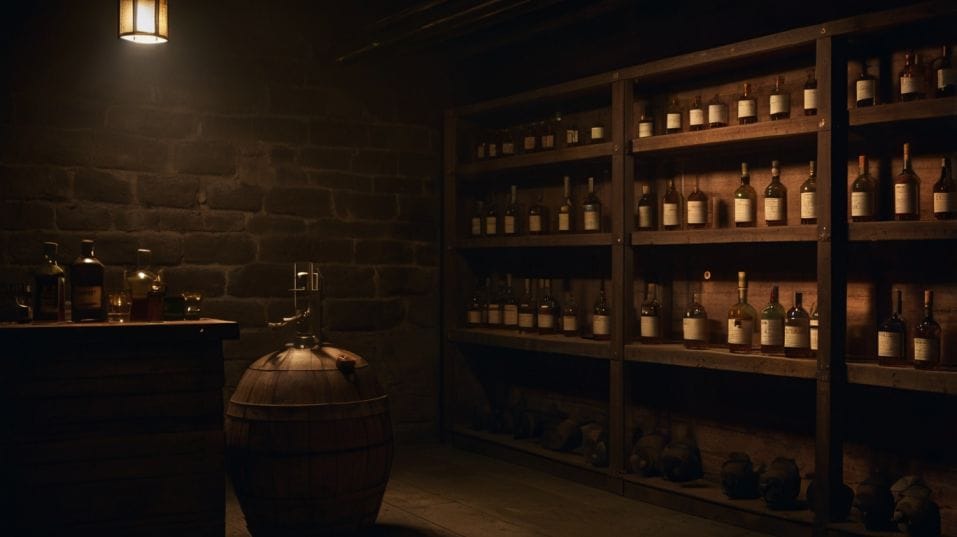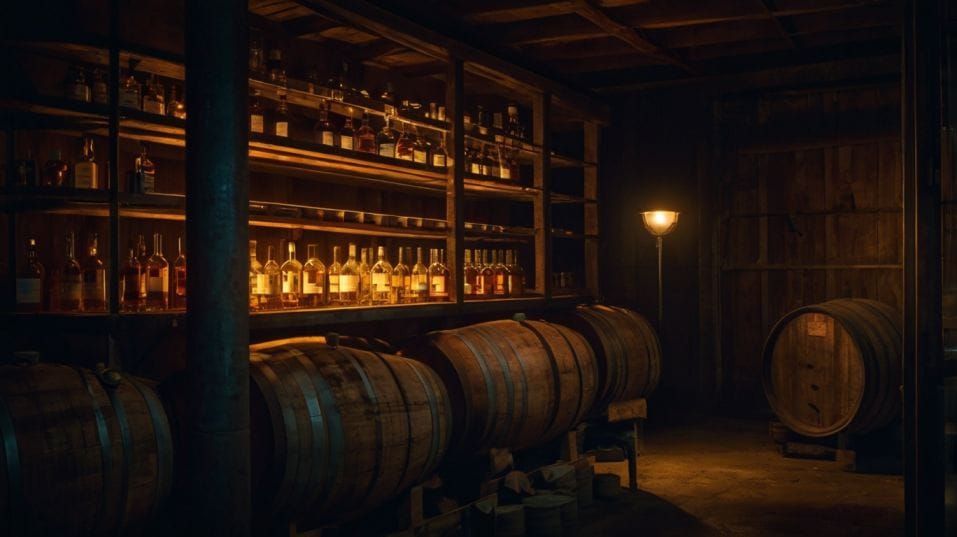Humidity and Corks: What You Need to Know
Learn how humidity impacts whiskey corks, flavor, and value—essential tips for storing bottles and protecting your collection with confidence.

Ever wonder why your prized whiskey suddenly tastes… off? It might not be the bottle—it could be the air around it. For collectors, casual sippers, or anyone just starting their whiskey journey, understanding humidity is essential.
A dry cork can quietly kill a bottle long before you pull the stopper. If you care about taste, value, or long-term storage, it’s time to stop guessing and start controlling your environment. Your whiskey’s life depends on it.
The Hidden Cost of Dry Air
Most people treat corks like background noise—until they fail. And with whiskey, that failure doesn’t always look like a crumbling stopper or moldy neck. It can be subtle.
A cork dries out, shrinks just enough to break the seal, and the whiskey begins to breathe. Not in a romantic, “let it open up” kind of way. In a slow-leak, oxygen-creep, flavor-loss kind of way.
Unlike wine, whiskey bottles are stored upright. That keeps the higher-proof spirit from degrading the cork over time. But it also means the cork isn’t constantly moist from the inside.
It relies entirely on the surrounding environment to stay supple. When humidity drops too low—below 40%, sometimes even lower in air-conditioned or heated spaces—the cork starts drying out. And the process begins.
Over time, dry air pulls moisture from the cork. It loses flexibility. Small gaps form. Oxygen gets in. The whiskey loses intensity, nuance, even color.
If it’s a high-ester bourbon or a delicate single malt, you’ll notice it first on the nose. Then the palate thins out. And eventually, a once-great bottle starts tasting tired. You didn’t drink it down—it just faded.

High Humidity Isn’t Innocent Either
Now, swing the pendulum the other way. Maybe you read that dry corks are bad, so you run a humidifier all winter. Problem solved, right? Not exactly.
Too much humidity causes a different set of issues. Corks can swell unevenly. Labels peel or develop mold. Foil capsules become sticky.
You start pulling bottles that look aged—not in the good way, but in the “found in grandma’s basement” way.
At extreme levels—70% or higher, sustained over time—you also risk damaging packaging, boxes, and anything collectible about a bottle.
If you’re saving bottles for trade, sale, or future opening, you need them looking sharp. A high-value whiskey with mold spots on the neck or a stained label isn’t just ugly—it’s devalued.
The goal isn’t constant correction. It’s equilibrium. You want a space that’s boring in the best way: 50% to 60% relative humidity, consistently. Enough moisture to keep the cork flexible. Dry enough to avoid rot.
Your Storage Space Isn’t Neutral
A lot of new collectors assume their whiskey cabinet or shelf is “fine” because the house feels comfortable. That’s not a safe bet. HVAC systems, especially in newer homes or apartments, can dry out the air far below healthy levels for whiskey.
Same with winter heat in cold climates. If you’ve ever woken up with dry sinuses or static shock, your corks are suffering too.
Even closed cabinets aren’t sealed environments. Air seeps in. Temperature shifts. Light leaks. If your bottles live in a display case near a vent, a window, or a heat source (radiator, fridge, electronics), you're exposing them to more than you think.
It’s worth walking your space like a detective. Feel for airflow. Check sunlight. Think long-term, not just layout.
Use a Digital Hygrometer
Install a digital hygrometer near your bottles. They're cheap, accurate, and more useful than a thermometer. Some even log trends, so you’ll know if your environment is gradually drifting.
If you’re in a dry zone, consider adding a humidifier—small and adjustable is fine. No need for a steam engine. And if your space is damp or musty, run a dehumidifier for balance. Whiskey doesn’t like extremes. It thrives in stability.
What Happens When Corks Go Bad
You won’t always notice right away. In fact, the most common outcome of long-term low humidity is subtle degradation.
Bottles you thought would “open up beautifully” turn out flat. The finish shortens. A rich sherry cask malt that once exploded with fruit now tastes vaguely sweet and oddly woody.
Then there’s the more obvious damage: corks break, tear, or crumble on opening. This is more likely in older bottles or dusty secondary-market finds, but it can happen with newer releases too—especially if they’ve been stored in dry air.
A compromised cork also means faster oxidation after opening. The whiskey goes downhill quicker, even if you reseal the bottle. That changes how you taste, how you plan openings, how you share.
And if you're investing—whether emotionally or financially—in rare bottles, any sign of tampering or leakage kills trust.
Even a stained tax stamp or discolored capsule can raise red flags for serious buyers. Proper storage isn't just about flavor. It protects value, too.
Managing Open Bottles
Once you open a bottle, the game changes. You’re introducing oxygen no matter how good the cork is. Over time, fill levels drop, headspace increases, and oxidation accelerates.
Humidity still matters. A dry room doesn’t just hurt sealed bottles—it speeds up evaporation in opened ones. Especially those half-full favorites that sit on the shelf for months.
You may even notice what collectors call “low fill syndrome”—where bottles slowly lose volume, not from pouring, but from evaporation through less-than-perfect corks.
Reduce Exposure After Opening
If you’re planning to keep an open bottle for a while, you’ve got options. Transfer leftover whiskey to smaller glass containers to minimize headspace.
Make sure the seal is tight. No plastic caps. No makeshift wraps. Just clean glass and good cork or screw-top closures. Treat those containers with the same humidity respect as sealed bottles.
Final Thoughts
Your whiskey doesn’t live in a vacuum. Every bottle in your collection is quietly reacting to the space around it—and corks are the front line.
Get humidity wrong, and you risk flattening flavors, damaging corks, and killing long-term value. Get it right, and you’ll preserve the soul of your whiskey for years to come.
So take the small steps that pay off big: monitor your space. Adjust as needed. Handle your bottles like they matter—because they do.
Don’t wait until your grail pour tastes like wet cardboard. Invest in a hygrometer. Check your corks. Start controlling your environment today. It’s the difference between drinking whiskey and really keeping it.




